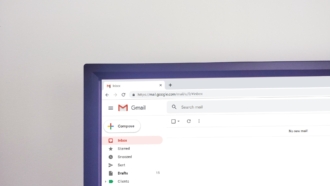7 proven ways to reduce customer churn
Customer churn refers to the number of customers that leave your business during a specific amount of time divided by the total number of customers you have in that time frame. It’s usually calculated as a percentage.
Customer churn is a useful metric. A Harvard Business School report revealed that just a 5 percent increase in customer retention can result in a massive increase in profits — between 25 and 95 percent.
While many organizations focus on customer acquisition, it’s equally important (if not more important) to prioritize customer retention by analyzing the churn rate and determining ways to reduce churn.
Here are seven ways to do that.
1. Figure out why customers leave
The most effective way to reduce churn is to understand why it happens in the first place. If you don’t know the cause, it’s unlikely you can determine the solution. There are several ways to determine the cause of churn, and they all involve communicating with the customer. You can
- Conduct exit interviews when major accounts leave
- Send exit surveys with one or two targeted questions
- Send personalized emails to solicit feedback
Be sure to store the data you receive from these efforts in an organized database, so you can carefully track the most common reasons your customers leave. Possible reasons include poor customer experience, lack of support, too long for the customer to see the value they expected from the product or service (time to value), and poor product-market fit.
2. Focus on profitable customers
In an ideal world, your business would be able to focus on all customers likely to leave by offering additional support where and when they need it. However, this isn’t always realistic. Sometimes you have to choose which customers receive the most attention.
In this case, it’s best to identify your most profitable customers who are likely to leave and focus on keeping them engaged. Could they use a dedicated account manager? Would they benefit from more video user guides? Find out what those customers need to remain loyal to you, and work to meet those needs.
3. Make it easy to get in touch
Your onboarding process should give your customers the information they need to contact you if they have questions or need help. This means providing several ways to contact you, such as phone, email, live chat, and support tickets.
Kevin Miller, cofounder and CEO of GR0, a digital marketing agency, notes that assigning a specific customer representative or account manager to each client is also helpful. This strategy ensures clients feel that your business values them and makes their satisfaction a priority.
4. Improve the onboarding process
Looking at your retention period metrics will help you figure out exactly when customers leave. This is important to know in conjunction with your customer churn rate.
According to an article on the Intercom blog, 40–60 percent of users who sign up for a free software trial will be one-time users. That means there’s already a lot of customer churn even before the onboarding process is over.
It’s not enough to simply hand your customers the tool — even if it’s free. You have to educate them on how to use it most effectively to meet their needs during the onboarding process so they have more reason to stay.
5. Create a user community
In addition to educating customers about how to use your product effectively, it’s vital to help them feel engaged with other customers using the product. User communities can help your customers feel involved and invested in your product — making it more difficult to leave. Consider creating forums where your customers can have discussions with each other as a way to reduce churn.
6. Aim to surprise and delight
Katie McFarlan, CEO of Dakota Design Company, which offers operations strategy and support for interior designers and wedding planners, recommends sending a card, a small gift, or a simple message of appreciation to customers during the onboarding process.
This personal touch isn’t something most customers expect, but they’ll likely be surprised by it and appreciate the gesture. A small act of kindness can help build loyalty and reduce churn.
7. Ask for feedback
Keeping the lines of communication open is key to reducing customer churn. Create touchpoints through the onboarding process and beyond where you provide opportunities for customers to offer feedback.
Catching churn before it happens enables businesses to improve processes, customer support, pricing, and other elements to keep customers engaged instead of losing them to a competitor.
To successfully reduce churn, one of the most important things your business can do is remain proactive, says Miller. Anticipating any potential problems and reasons for churn — and meeting customer needs head on — will help ensure loyalty in the long run.






































































Send Comment:
2 Comments:
More than a year ago
Thanks, I found your tips really helpful. I require strategies to prevent churn in the online gaming industry and this article gave some insights customer churn prevention strategies
More than a year ago
One reason why businesses lose so much money to churn is that they don’t know why they lose so many customers. Which means they can’t do anything about it!
Aritic PinPoint helps companies reduce customer churn by pinpointing exactly why their customers are leaving them and how to win back their loyalty. With a service like this, businesses can stay in contact with all their customers, wherever they go on the web. Now that's powerful marketing!